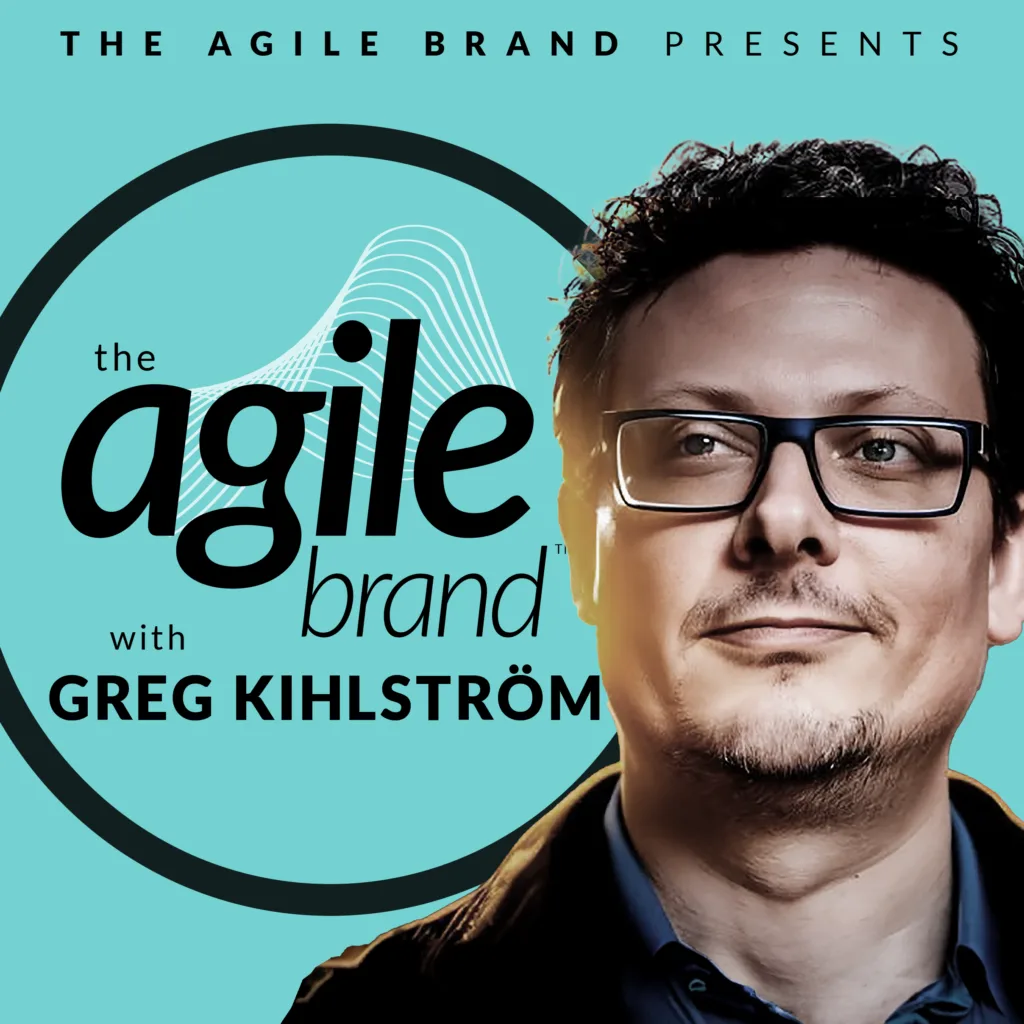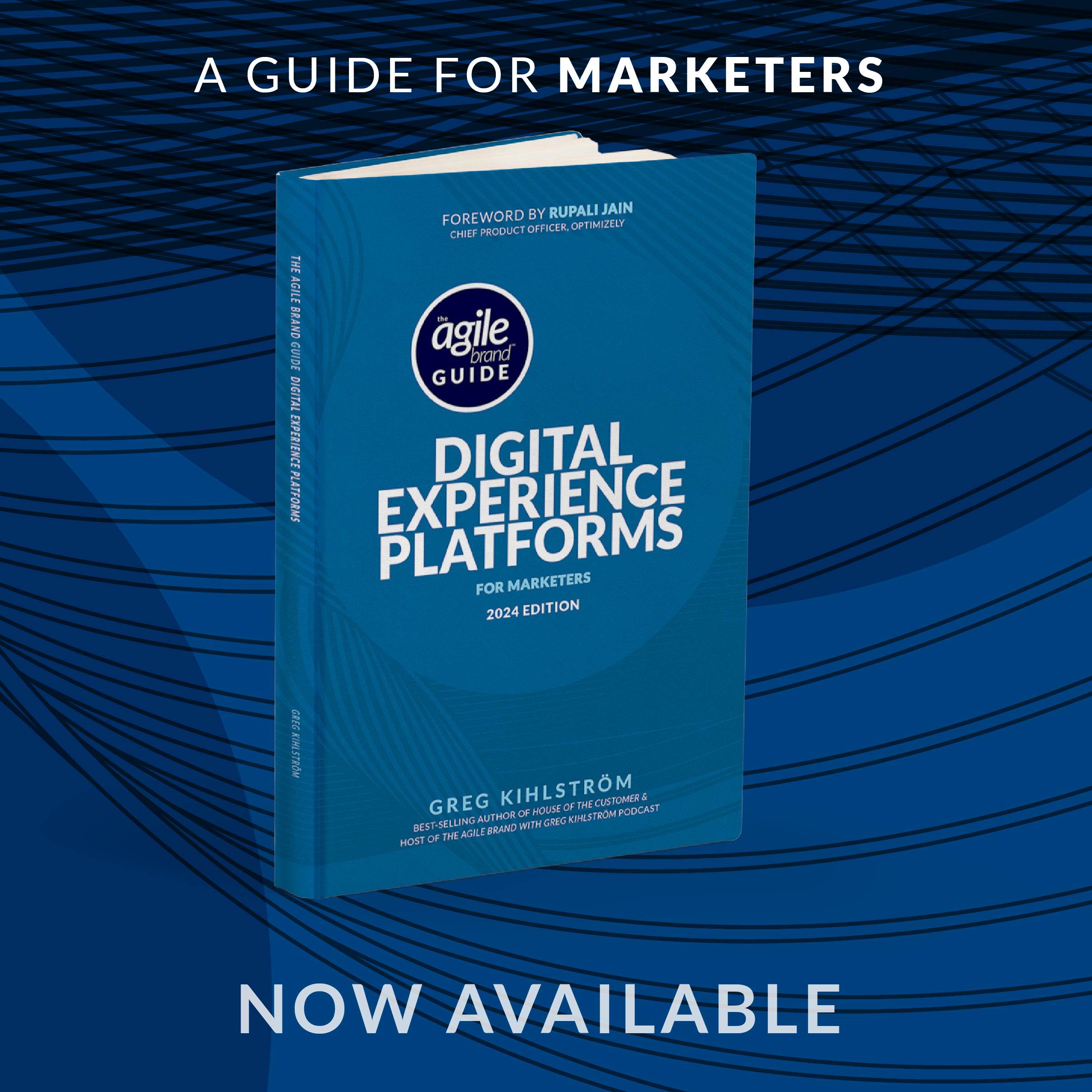Is your organization just jumping on the AI bandwagon, or do you have a solution that will support your company’s needs in the short and long term?
Welcome to this episode, brought to you by Reka, a developer of industry-leading, multimodal, AI models that enable individuals and organizations to deploy generative AI applications.
Today we’re going to talk about the power of multimodal AI in the enterprise and why it is important for businesses to incorporate AI that is able to utilize multiple input sources, multiple languages, and flexible contexts to provide more intelligent insights. To help me discuss this topic, I’d like to welcome Dani Yogatama, CEO of Reka.
Resources
Reka: https://www.reka.ai
Don’t Miss MAICON 2025, October 14-16 in Cleveland – the event bringing together the brightest minds and leading voices in AI. Use Code AGILE150 for $150 off registration. Go here to register: https://bit.ly/agile150
Connect with Greg on LinkedIn: https://www.linkedin.com/in/gregkihlstrom
Don’t miss a thing: get the latest episodes, sign up for our newsletter and more: https://www.theagilebrand.show
Check out The Agile Brand Guide website with articles, insights, and Martechipedia, the wiki for marketing technology: https://www.agilebrandguide.com
The Agile Brand podcast is brought to you by TEKsystems. Learn more here: https://www.teksystems.com/versionnextnow
The Agile Brand is produced by Missing Link—a Latina-owned strategy-driven, creatively fueled production co-op. From ideation to creation, they craft human connections through intelligent, engaging and informative content. https://www.missinglink.company
Transcript
Greg Kihlstrom:
Is your organization just jumping on the AI bandwagon, or do you have a solution that will support your company’s needs in the short and long term? Welcome to this episode brought to you by Reka, a developer of industry-leading multimodal AI models that enable individuals and organizations to deploy generative AI applications. Today, we’re going to talk about the power of multimodal AI in the enterprise and why it’s important for businesses to incorporate AI that is able to utilize multiple input sources, multiple languages, and flexible contexts to provide more intelligent insights. To help me discuss this topic, I’d like to welcome Dani Yogatama, CEO of Reka. Dani, welcome to the show. Hello, everyone. Great to be here today. Yeah, looking forward to talking about this with you. Before we dive into the topic, though, why don’t you start by giving a little background on yourself and your role at Reka?
Dani Yogatama: Yeah, I’m Dani Yogathama, CEO and co-founder of Reka. I grew up in Indonesia, went to grad school, received my PhD from Carnegie Mellon. Prior to Reka, I worked for seven years at DeepMind in London. My academic research focuses on multimodal models, memory systems, and reinforcement learning. Great, great.
Greg Kihlstrom: So yeah, let’s dive in here and why don’t we start with some background on Reka and what makes it unique. So there’s a lot of talk about AI and generative AI in particular of late. Can you talk about what inspired you to co-found Reka?
Dani Yogatama: Yeah, we started Traka because we believe AI has the power to transform the world, but only if it’s built and applied in the right way. My goal has always been to ensure that this technology benefits as many people as possible, goes beyond research labs or big corporations, but be helpful for everyone in the world. Reka is our vehicle to create the highest impact where we could push the boundaries of AI while making it accessible and practical for real world use. But yeah, I started the company after working for about 15 years doing research. On a personal level, so after spending so many years doing research, I also felt like I wanted to try something different, wanted a new challenge. And about like two years ago, I felt that the timing was right. The technology got to a place where it is ready for mass adoption. So yeah, excited to be doing this with a few friends.
Greg Kihlstrom: Yeah, yeah, definitely. And so can you talk a little bit about what are some of the types of problems or challenges that Reka solves for?
Dani Yogatama: Yeah, so our goal is to use AI to improve human productivity by developing models and agentic platforms. Most people probably know us, Reka, from our multi-model models, Reka Edge, Flash, and Core. We open-sourced a new model, a third generation of Reka Flash. We call it Reka Flash Tree. It is the most performant model of its size. We just did it a few days ago. It is a 21 billion parameter general purpose model, optimized for speed, efficiency, and quality. It is competitive with proprietary models such as OpenAI O1 Mini. RecaFlash is a great model for developers and researchers that need a powerful but lightweight model to build on. But yeah, so like in addition to models, we also build like platforms, applications that is powered by these models. One of our flagship platform is called Nexus. This is a multi-model enterprise intelligence platform focusing more on creation and organization management of AI workers. So we spend a significant portion of our time on repetitive tasks, limiting our ability to focus on creative and strategic work as like humans, right? So Nexus actually improves enterprise efficiency and increases productivity by enabling humans, employees to partner with AI workers, which can be customized to specialize in different tasks. For example, conducting topic research, processing invoices, generating sales leads. In this partnership between human employees and AI workers, we as humans can focus on management and delegations, managing a bunch of AI workers, while this AI workforce performs low-level repetitive tasks. Our Nexus workers have capabilities to, for example, browse the web, search from internal files, write code, execute code, and analyze contents from various multi-modal data, from PDFs, audio recordings, video databases, images, and the web as well.
Greg Kihlstrom: Yeah. So, you know, as I mentioned, and as you surely know, there’s a lot of talk about AI. There’s a lot of investment being made in AI by companies. And yet, there’s probably a lot of missteps that companies could make. What do you see as, you know, what do a lot of companies get wrong when incorporating AI into their organizations?
Dani Yogatama: Yeah, that’s a great question, Greg. So AI has the potential to transform businesses, but many organizations, as you said, struggle with implementation. There are some common mistakes or challenges that I see that slow down AI adoptions. So for example, a common mistake is relying solely on off-the-shelf AI models without customization. It is important to remember that every organization has unique challenges, unique constraints, and a one-size-fits-all approach often fails to deliver real value. An organization will want to adapt a model that can adapt to their business needs. So this is not just more performant, but also more cost efficient so that they can get AI to truly work for them. We develop Nexus, our energetic platform to allow enterprises to be able to do this really easily. Of course, organizations should also look into a model or a product that they can put into their existing system integration. So we also built it. We had a lot of easy integrations for existing internal data that they currently have. In addition to not relying solely on off-the-shelf models, it is important to remember that AI is not just about generating insights in the form of text outputs. To me, it is about accomplishing tasks. If you see previous generation AI models, So you ask a question and then you get a text output, right? So that’s just an insight. I mean, that’s nice, right? But I think nowadays people expect AI to do more than that. You want them to actually do stuff for you, not just producing an output and be able to do stuff for you. So that’s what we focus on here at Tricar. So many businesses, they stop at just this chatbot version of AI, but don’t use it in the right way so that AI can do star story, like take meaningful actions, right? So this is what Nexus enables them to do, a major focus for us, building AI that doesn’t just, you know, produce textual output, but also doing stuff for you. It’s like automation, delegation. So you could just delegate something to them and just forget about it. And then every once in a while, you could check on them, how you would work with your regular human employees. And then maybe they give you updates every day or every week, however frequently you want to set it up.
Greg Kihlstrom: And so I know you’ve touched on a few different points as you’ve talked through some of these things, but what would you say sets Reka apart from its competitors in the AI landscape?
Dani Yogatama: Yeah, yeah. So there’s a lot of companies in AI, obviously, nowadays, we are different because we are a full stack company that not only develops our own internal models, but also build products. But within like among companies that develop their own models, we are very different because we are a lean startup with modest resources. So as such, our focus from the beginning of the company has always been on cost efficiency. So including when we’re developing our models or that power our platforms, right? As a full stack company that has the expertise to both train models and develop applications, products, we are, I think, well positioned to deliver the highest value for our customers. So for example, our technology allows us to develop AI models that only cost about like five to a million dollars. And they perform competitively with like models from other companies that are chained with like tens or even hundreds of millions of dollars. So for our customers, it means that they have access to secure cost efficient state-of-the-art AI.
Greg Kihlstrom: Yeah. You’ve mentioned efficiency and cost and things like that. How should companies be measuring their success in implementing AI in their organization?
Dani Yogatama: Yeah, the ROI of implementing AI technology is actually multifaceted, right? So from cost reduction, like using AI to reduce your operational costs, but also to improve customer satisfaction. But this requires organizations, businesses to not only look at just the model performance, but also things like latency. operational uptime, you know, how many hours are available for like, you don’t want to like deploy it. And then like, you know, there are periods of downtime, because like, you know, the provider server is like, you know, not available because like the traffic is too high or something like that. So I think like, time is also important. In addition to that, also robustness to like failures, right? At the end of the day, I think we want to make sure that business users are happy and satisfied with the whole experience and that they are confident when working together with our AI.
Greg Kihlstrom: Well, and I would say the uptime probably has a different it has an additional meaning when you have agents that are to your to what you were saying earlier when they’re performing tasks, you know, semi autonomously or autonomously. Uptime means it would be the equivalent of your your human employees not having access to the Internet or something. Right. So, I mean, that’s some of these metrics that you mentioned take on some some different meanings for your customers. Would you say that’s true?
Dani Yogatama: Yeah, yeah, 100%, that is correct. And it is also one of the things, so when businesses work with us, they control the entire deployment process. They can choose whether they want to use their own server, our server, depending on what is the most suitable for them. If they work with companies that only offer their models behind API. Obviously, they cannot control when the API is down because of some other reasons. You just hope that they fix it as soon as possible. And there’s a lot of applications of this technology that is very sensitive to it. It’s so critical to businesses that you just cannot afford to have it down. So by working with us, being able to deploy and control the deployment yourself, you’re guaranteed to have higher robustness to server failures because you control everything. There’s not going to be traffic from other companies that are eating away some of your bandwidth today.
Greg Kihlstrom: Yeah, definitely. So let’s talk about what’s coming soon as well. You know, certainly as someone who’s done a lot of research and, you know, and as Reka has built a lot of innovative tools already, what do you see as, you know, what should companies be looking out for in their AI in the months to come? And maybe, you know, what’s on Reka’s radar as well?
Dani Yogatama: Yeah. No, I think 2025, everybody knows it’s the agentic era in AI, right? Where people start to expect more and more. I expect there’s a lot of movements in this space. I think for us, right, from the beginning, our focus has always been on multi-modal reasoning. I think these two are key components to make agents that actually work, not just, you know, I say I have something, but it doesn’t actually help you with your source outreach 100% of the time. And also, I think this is an exciting time where AI models started to actually, maybe from last year, being deployed in production to solve many real-world problems. People have understood now that this technology actually helps their businesses. It’s not just, you know, like an initial testing period I have, I have passed, like people, Oh, I actually get a lot of values from this. So they started deploying it in production. So I think that is exciting for us. And then a lot of companies also now realize that adopting this technology and even like pushing it further doesn’t necessarily require massive budgets. You don’t have to spend so much money to be able to benefit from this technology. And it can be used in a cost-efficient way. So they get the best return of investment. And then the cost of developing this model also continues to go down as we have shown with our recent launch of Rekka Flash 3, our latest model, most performant multimodal reasoning model of its size. But yeah, so I think what’s coming up for us is we have this enterprise intelligent platform, Nexus, for creating and managing AI workers. We are continuing to build multi-modal agentic platform. We have another product called Guardian that’s going to be launched publicly. very soon in the next few weeks. It’s a video monitoring solution built on top of the same models that we use for Nexus, but focusing more on real-time threat detection, more like video monitoring software. Both of these products obviously use our proprietary models and multi-modal genetic platforms, and can be easily integrated into organizational processes. I definitely hope I can share more about Guardian in the weeks to come.
Greg Kihlstrom: Yeah, yeah, looking forward to learning more about that for sure. Well, Dani, thanks so much for joining today. One last question for you. Before we wrap up here, I’d like to ask this question to everybody. What do you do to stay agile in your role and how do you find a way to do it consistently?
Dani Yogatama: Yeah, it requires, I think, a combination of strategic foresight, adaptability, and a strong feedback loop, both internally within Reka within our company, but also externally from our partners, customers, and the AI community more broadly. It is a technology that is evolving very rapidly. So for us to keep up with the progress as a company, we need to move fast and to continuously improve our technology. So staying agile is super imperative. So of course, I cannot do this without our team members, a team that’s highly empowered, has a sense of ownership and trust will help us succeed. And that is what our team culture is. Thanks for having me as a guest, Greg. It’s great to be here.












